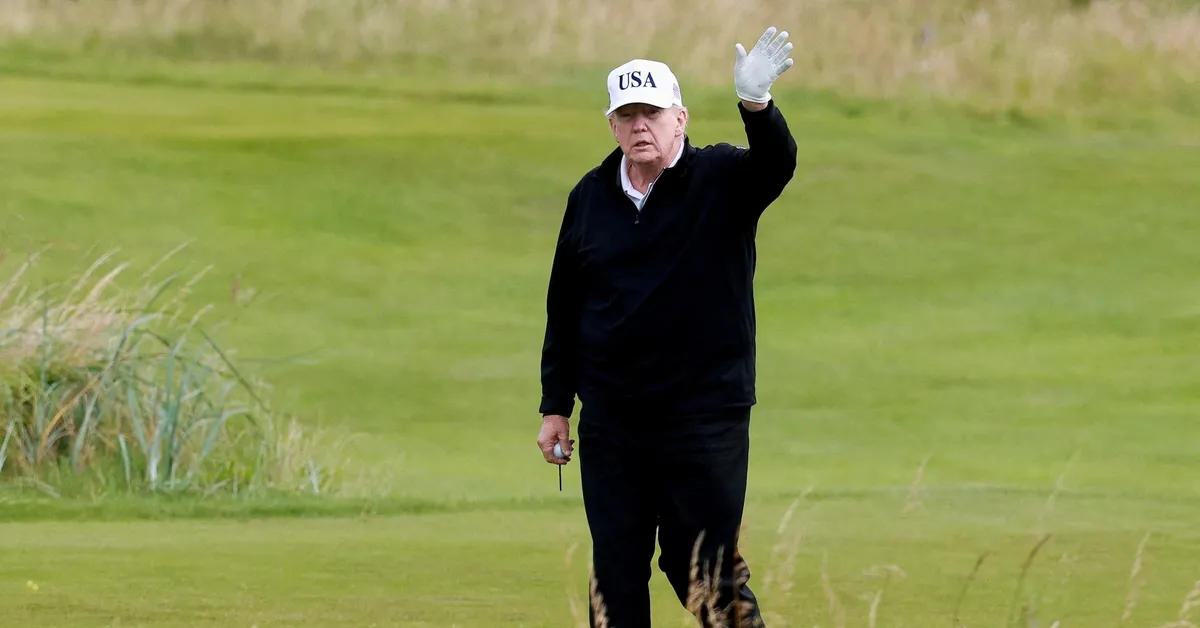
On July 27, 2023, European Commission President Ursula von der Leyen is scheduled to meet with U.S. President Donald Trump in Turnberry, Scotland, as the two leaders aim to finalize a significant trade deal for Europe. This prospective agreement is expected to establish a 15% baseline tariff on a majority of EU goods, addressing months of uncertainty for European companies.
Prior to the much-anticipated meeting, U.S. and EU teams are engaged in critical discussions concerning tariffs on essential sectors such as automobiles, steel, aluminium, and pharmaceuticals. U.S. Trade Representative Jamieson Greer and Commerce Secretary Howard Lutnick arrived in Scotland on Saturday, while EU Trade Commissioner Maros Sefcovic joined the talks on Sunday morning. A Trump administration official expressed cautious optimism about reaching a deal, stating, “It’s not over till it’s over.”
In light of the potential for no agreement, EU diplomats are proactively preparing countermeasures. If the U.S. imposes 30% tariffs starting August 1, the EU has ready counter-tariffs targeting €93 billion (approximately $109 billion) worth of U.S. goods. During a teleconference held by EU government ambassadors on a weekend trip to Greenland, officials discussed the level of flexibility that von der Leyen would have during the negotiations.
Sources indicate that the eventual deal could mirror the recent U.S.-Japan trade agreement, featuring a broad 15% tariff on EU goods entering the U.S. Additionally, there might be a 50% tariff on European steel and aluminium, accompanied by potential export quotas. Given that the U.S. and EU are each other's largest trading partners, accounting for a third of global trade, successfully negotiating this deal is crucial.
As negotiations unfold, there is speculation that the EU could secure exemptions from the 15% baseline tariff for specific industries, including aerospace and spirits, although exemptions for wine are less likely. Furthermore, the EU may commit to increasing its purchase of liquefied natural gas from the U.S., a proposal that has been in discussion for some time, along with pledging to enhance investment in the U.S. economy.
President Trump has indicated that there is limited flexibility regarding the 50% tariffs on steel and aluminium imports, stating, “If I do it for one, I have to do it for all.” Upon arriving in Scotland, Trump acknowledged von der Leyen as a highly respected leader and expressed eagerness for their discussions, noting a 50-50 chance of reaching a framework trade pact. With the EU currently facing U.S. tariffs on over 70% of its exports, including a 25% tariff on cars and car parts, the stakes are high for both sides.
The looming threat of increased tariffs has already begun to impact the profitability of EU companies across various sectors. A 15% tariff on most EU goods would alleviate some uncertainty but would likely be perceived as a disappointing outcome compared to the EU's initial goal of achieving a zero-for-zero tariff deal on all industrial products. Learning from Japan's recent success in securing a 15% baseline tariff, EU negotiators have consulted with their Japanese counterparts to better prepare for the upcoming meeting.
For President Trump, establishing a trade agreement with the EU would represent a significant milestone in his efforts to reshape the global economy and address longstanding U.S. trade deficits. A successful deal would surpass even the $550 billion agreement with Japan. To date, the Trump administration has negotiated agreements with several countries, including the UK, Japan, Indonesia, and Vietnam, but has yet to deliver on the ambitious promise of 90 deals in 90 days.